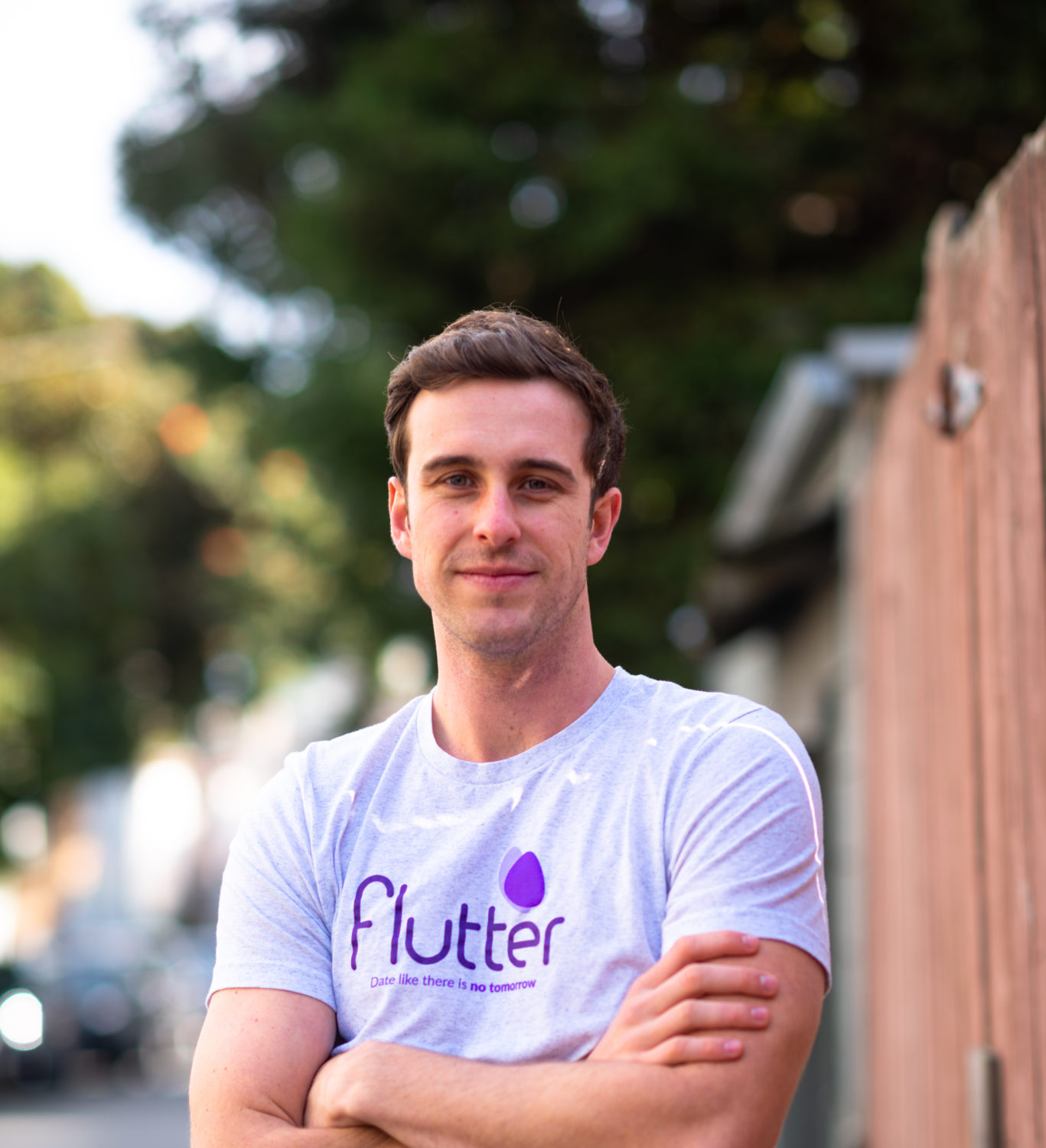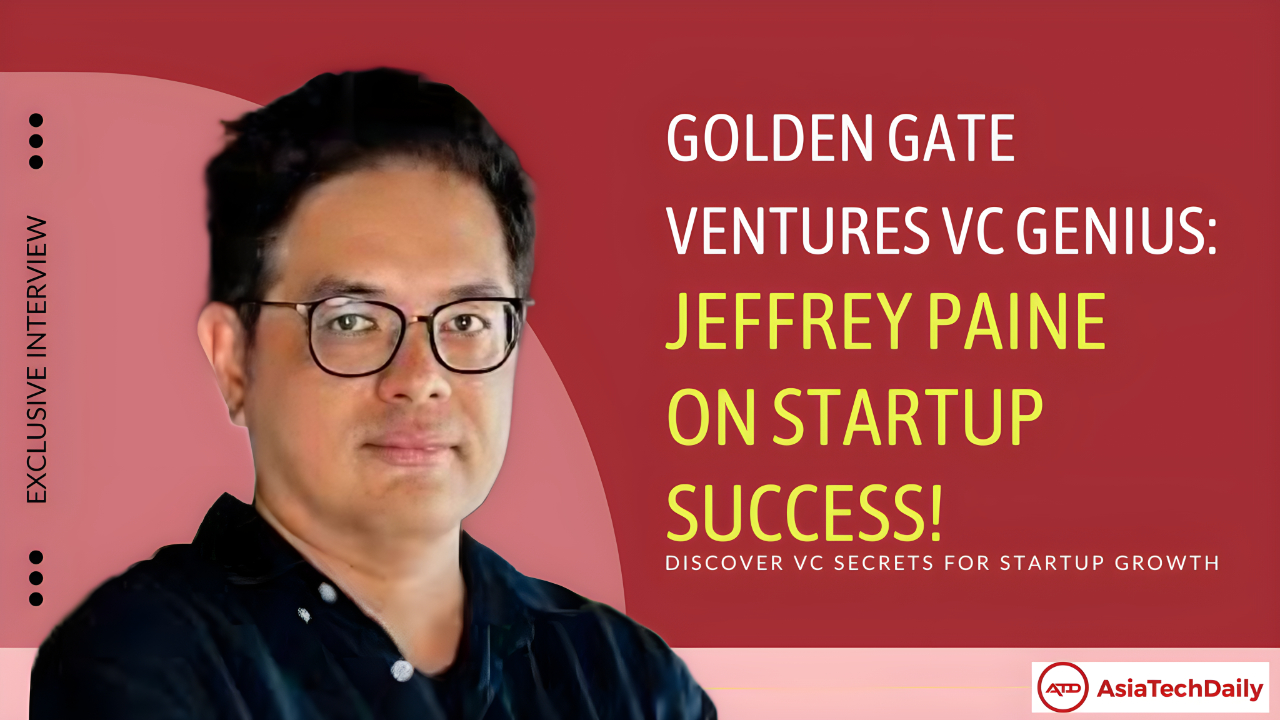AsiaTechDaily – Asia's Leading Tech and Startup Media Platform

Clay Jones- CEO And Co-Founder Of Flutter- Date Like There’s No Tomorrow!
Clay Jones is a San Diego native with a degree in Computer Science from Stanford University. While in his Sophomore year at Stanford, he co-founded a social polling application that grew to a few hundred thousand users across 100+ colleges in the matter of a few months. After leaving the social polling app to finish his studies and career in volleyball, Clay became a fellow at the venture firm, Highland Capital, that backed his first company, where he consulted early-stage consumer investments on growth and marketplace virality. In his senior year, he was recruited to Branch Metrics after being one of their earliest customers in college. After only two years and is the youngest member of his team, he was promoted to senior tech lead of the Core Foundation team, which was in charge of developing and maintaining the core linking infrastructure that supported over 1 billion clicks per day. Clay left Branch on great terms to start Flutter.
In an exclusive interview with AsiaTechDaily, Clay says:
Never be afraid to change directions significantly. Always let data and feedback push the trajectory of the product. You will be surprised how often your intuition is wrong.
To me, a good launch checklist is a good measurement checklist. Track everything. Launching is the time when you’re supposed to learn and iterate quickly. To learn, you need to measure and analyze data. I may be biased coming from a mobile attribution company, but I firmly believe every decision should be data-driven.
Read on to know more about Clay Jones and his journey.

Please tell me about your personal background, and what are you working on currently?
Clay Jones: I have a background in software engineering. I graduated from Stanford University with a degree in Computer Science in 2017. After school, I went on to work as a senior software engineer at Branch Metrics, the mobile attribution, and deep linking company.
I started working on Flutter back in April of 2019 as a side project. Flutter is a live dating app experience where everything expires. Currently, we are launched in San Francisco, and the app goes live every Sunday from 2 pm to midnight.
What motivated you to get started with your company?
Clay Jones: When I used dating apps after getting out of a four-year relationship, I started to feel insecure about my ability to meet someone. My matches seemed completely uninterested in chatting with me. They would respond every couple of days, if at all. I had always attributed this unresponsiveness to their disinterest in me without ever questioning the idea that they may not be on dating apps 24/7.
I wanted to build a dating community with presence and responsiveness where users are not constantly debating whether they should respond right away or wait 48 hours to avoid coming off as ‘clingy.’
How have you attracted users and grown your company from the start?
Clay Jones: People use Flutter because their friends have had success on Flutter. Our app pushed matches to progress past the app and into dates, which ultimately leads to more people talking about Flutter. In the early days, we had unique methods of building that early community, but now most of our users are organic.
What’s your business model, and how have you grown your revenue? What strategy worked best?
Clay Jones: We will be launching a freemium subscription model in the future, but as of now, we are focused on retention and product ‘stickiness.’ With dating apps, we’re not reinventing the wheel when it comes to monetization, but we do have more opportunities for premium features given the added restrictions of one-day dating.
How much money (funding) have you raised in total so far? When was the recent funding round? (Additionally, any plan for the future?)
Clay Jones: We just closed a pre-seed of less than $500K. We plan to raise a more formal seed later this year once we are ready to expand nationally.
What are some marketing tips to help maximize the success of a product launch?
Clay Jones: When building a community for launch, don’t cheat by seeding fake content or fake users. Instead, develop waitlists until you’ve reached the necessary critical mass.
Many social product founders have trouble getting the product off the ground because they have built features that require high critical mass to become valuable. Always ask yourself, “does this feature make sense with the number of users that we have right now?” Be overly critical. Most of the time, features sound good in idealistic situations, but flop in reality.
What is a good product launch checklist?
Clay Jones: To me, a good launch checklist is a good measurement checklist. Track everything. Launching is the time when you’re supposed to learn and iterate quickly. To learn, you need to measure and analyze data. I may be biased coming from a mobile attribution company, but I firmly believe every decision should be data-driven.
What’s the hardest thing about product launches?
Clay Jones: Product launches require juggling a thousand different tasks. It’s all about moving quickly and leveraging momentum. Try everything. A lot of founders will fixate on one idea and put all of their effort into that hypothesis. Find low-cost, low-commitment ways to test hypotheses and increase investments into channels once you start to see solid ROI.
What are the most common mistakes founders make when they start a company? (or What should all first-time startup founders know before they start their business?)
Clay Jones: At least in the social app space, founders believe that acquiring a ton of users is what makes the experience great, so they should dump a ton of money into user acquisition. Although more users can enhance the experience, it is not enough to create the optimal experience. If you have not optimized the ‘stickiness’ of your product, you will lose users much faster than you acquire them. Determine the minimal critical mass necessary, spend just enough to acquire that number, and be ready to analyze and iterate.
What do most startups get wrong about marketing?
Clay Jones: Most startups have not figured out how to properly measure the success of their different marketing channels and mediums. There is so much more to measurement than CPI or CAC. For Flutter, in particular, the types of users we acquire change the overall experience of the app for everyone, so it becomes increasingly more important to unpack the black box of marketing analytics. We rely heavily on our attribution solutions from Branch.
What’s the best advice you’ve ever received? And What advice do you have for someone who is interested in doing similar things like yours or in a similar direction?
Clay Jones: Never be afraid to change directions significantly. Always let data and feedback push the trajectory of the product. You will be surprised how often your intuition is wrong.
What are the one or two things that you would do differently if you could go back to 10 years ago?
Clay Jones: Given that 10 years ago, I was in high school, I’ll think back to 5 years ago when I was starting my first consumer app company. My piece of advice to myself would be to not be afraid of failure. Take every failed opportunity as an experience to learn from. At the moment, it can sometimes feel impossible to see failure as progress.
You can follow Clay Jones here.
https://twitter.com/joinflutter
Are you looking to secure investment for your startup or a keen startup enthusiast, keep an eye on our interview section.
Follow Asia Tech Daily to know about the innovative startups and how they are revolutionizing the ecosystem.





